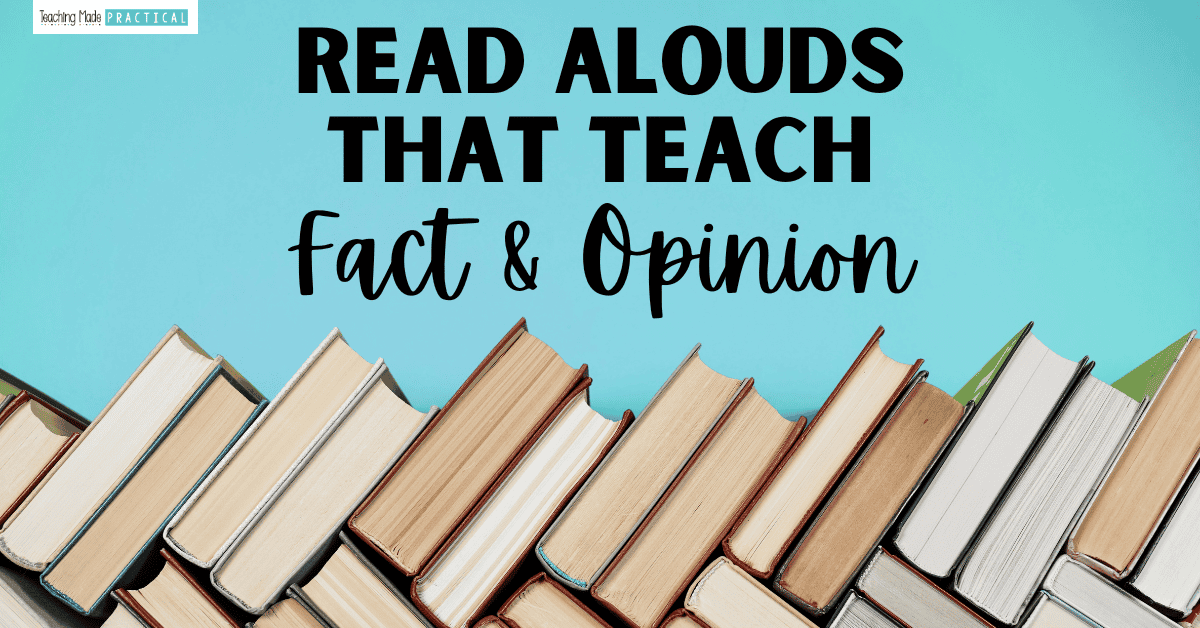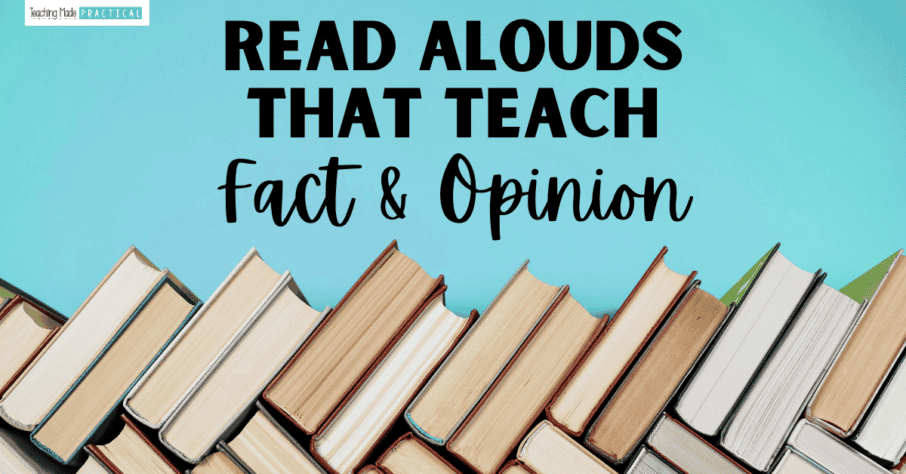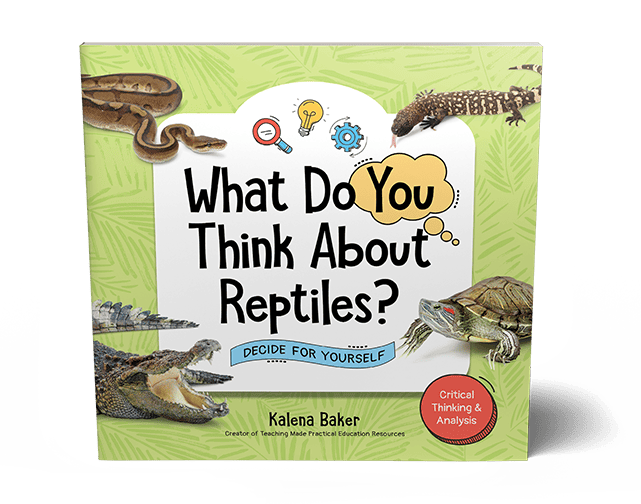
Finding read-aloud books to help 3rd, 4th, and 5th graders learn to distinguish between fact and opinion can be challenging. Many nonfiction books do include both facts and opinions, but the opinions are often subtle, which can be confusing for upper elementary students.
We also tend to choose books with opinions we want students to agree with—like those describing Martin Luther King, Jr. as a hero. But it’s much easier to teach about opinions when there’s room for students to actually disagree!
Below, find a list of books that are useful for introducing and teaching facts and opinions to your students. These books include some clear factual statements and opinion statements, as well as opinions that some of your students will probably disagree with!
Fact and Opinion Read Aloud Ideas
What Do You Think About Reptiles?
I'm probably a little biased, since I wrote the book, but this book is a must-have for any upper elementary classroom. It is not just a book about reptile facts; it is a book about facts and opinions, author bias, and how people try to persuade you to believe certain opinions by manipulating facts.
It is next to impossible to find children's nonfiction books that encourage students to disagree with the author - but in this age of information overload, kids need to understand that facts can be manipulated; students do not have to agree with an author's opinion simply because the author shared some facts.
In this book, upper elementary students are presented with two contrasting opinions, each supported by facts, and then students get to consider the information provided and decide what THEY think and why.
Students will be able to see how facts can be used to support opinions and how an author's opinion affects how they share facts.
This thoughtful book tells facts about beetles, sprinkled in with descriptive opinions that are supported by facts.
For example, the author claims, "A beetle is tasty." This opinion might spark some fun conversation, as most 3rd, 4th and 5th grade students in the U.S. do not eat beetles. But the author then supports this opinion with facts, providing examples of foods containing beetles and explaining that "Because they are so plentiful, and also protein-rich, they are eaten by humans all around the world."
The author also shares contradictory opinions, with facts to back both opinions up. For example, the author claims that a beetle is helpful because it keeps plants healthy by eating aphids, but a beetle is also harmful because it destroys crops that humans rely on.
Use this book to give 3rd, 4th, and 5th grade kids practice distinguishing fact from opinion, to think about how facts support opinions, and to share their own opinions about beetles. Use these fact and opinion activity ideas to help you create some fun lessons using this read aloud!
Students will LOVE this hilarious book about flies - written from the fly's perspective. It provides plenty of factual fly information, but the fly also offers his own opinion on his species.
For example, when describing how flies hatch from eggs, the fly provides a straightforward fact: "Scientists called us larvae." Then, he adds an opinion: "Our parents called us adorable."
The fly also humorously compares flies and butterflies throughout the book, sharing biased reasons why he thinks flies are superior. In doing so, the fly shares both facts and opinions about butterflies. For example:
- Fact: "The monarch butterfly flaps its wings only 5 to 12 times per second."
- Opinion: "Also, butterflies are annoyingly quiet."
This is a great book for teaching fact and opinion, point of view, and bias in a fun and informative way!
This cute book is written from the perspective of someone who does not like spiders but is trying to learn to like them by thinking about cool spider facts. Kids will love the silly interjections throughout the book where the author pretends to see a spider and reacts wildly.
The book includes many different interesting spider facts while interspersing different opinions. For example, the author shares the opinion, "Spiderwebs are cool" and then immediately provides a fact to support that opinion - "Spiders spin webs out of protein-packed spider silk they make themselves!"
This is a great read aloud to model distinguishing between fact and opinion and to encourage students to think about their own opinions about spiders!
This read aloud would be great for introducing or reviewing fact and opinion with your students. It explicitly teaches the definition of fact and opinion and includes fun questions to help students better understand this skill. While some upper elementary students might feel like they are too mature for the book, they will still benefit from the clear examples and illustrations designed to teach fact and opinion.
Personally, I love that this book teaches that sometimes we do not have enough information to determine whether something is a fact or opinion, and we have to wait until we have more information. This is a subtle truth that is often overlooked.
If your students need more practice with fact and opinion, these examples to use in lessons might help!
Never Stress Over Sub Plans Again!
Want This Constructed Response Freebie?







